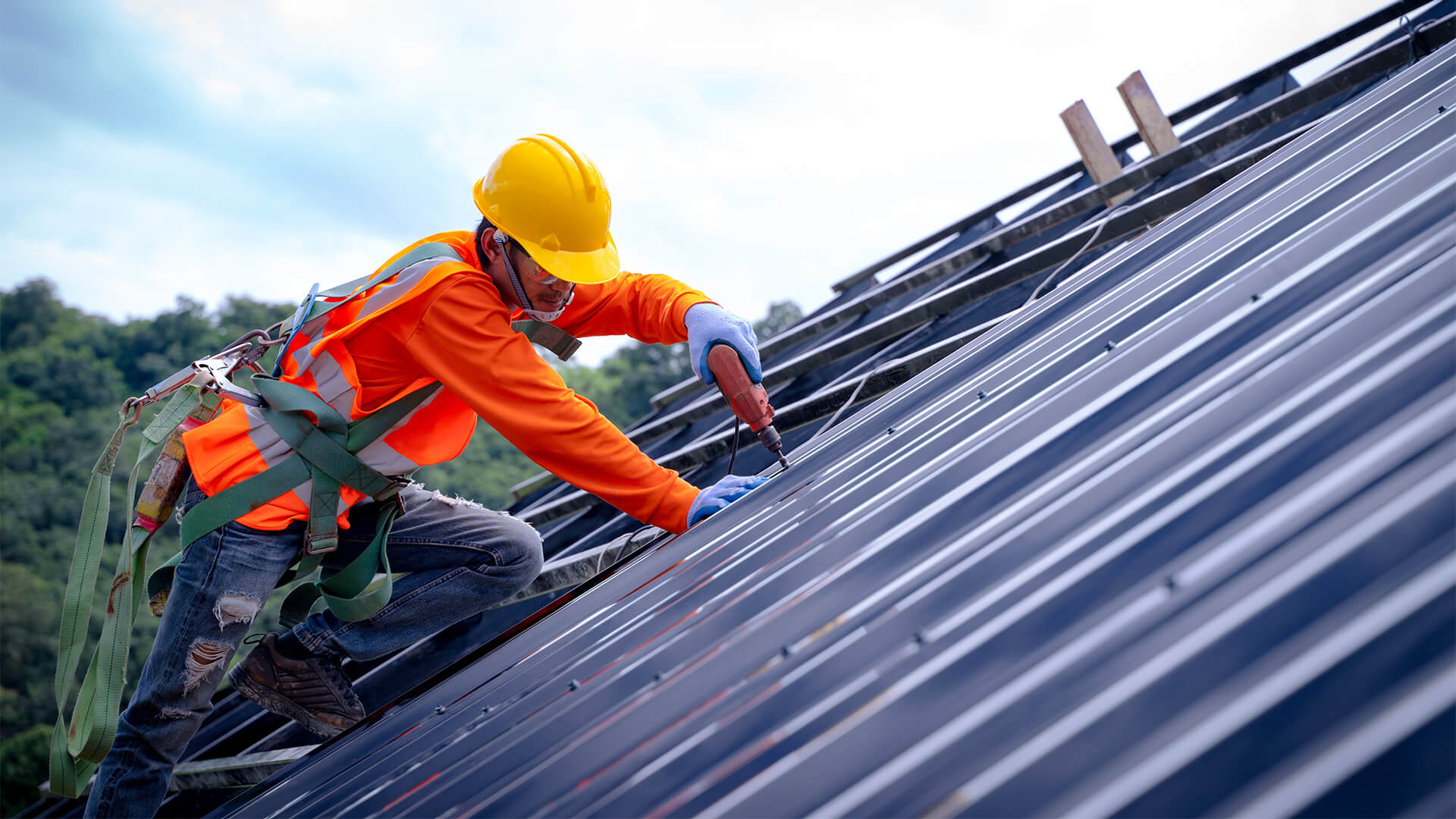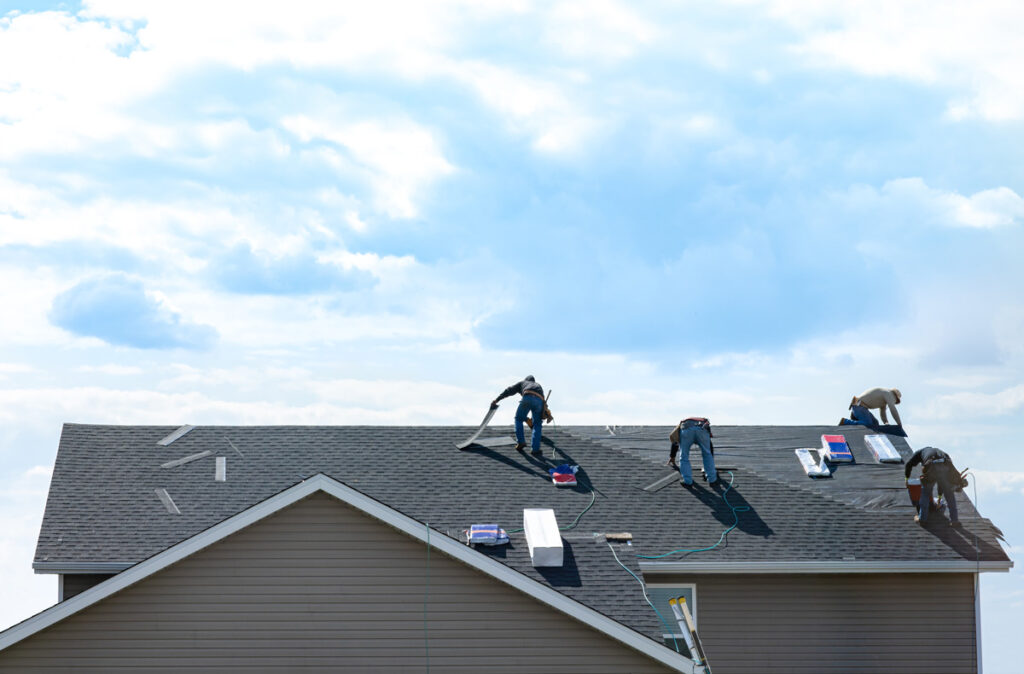Understanding the Different Kinds Of Roof Coverings: A Comprehensive Guide for Homeowners
With a variety of choices-- ranging from the typical gable to the contemporary level-- each type presents special benefits and challenges that ought to line up with the homeowner's particular demands and ecological considerations. As we explore the intricacies of different roof kinds, it becomes noticeable that one size does not fit all; the best choice might stun you.
Saddleback Roof
Saddleback roofs, characterized by their triangular shape, are amongst one of the most preferred roof designs as a result of their simplicity and performance in shedding water and snow. This design includes two sloping sides that fulfill at a ridge, enabling for effective drainage and decreasing the threat of water build-up. The steep pitch frequently related to gable roofings improves their capacity to manage hefty rainfall, making them suitable for different environments.
Along with their sensible benefits, gable roofing systems supply visual versatility. They can be adjusted to various architectural designs, from conventional to modern-day homes. The style can additionally fit additional functions such as dormer windows, which enhance all-natural light and ventilation in the attic room space.
In addition, gable roof coverings give ample space for insulation, adding to energy efficiency. Homeowners can select from a selection of roof materials, including asphalt roof shingles, steel, and floor tiles, better improving modification choices.
In spite of their benefits, saddleback roofs may require additional support in locations susceptible to high winds or hefty snowfall. In general, the gable roofing system stays a preferred option because of its blend of functionality, resilience, and aesthetic appeal.
Apartment Roofs
Flat roofs are typically identified for their minimalist style and useful applications, specifically in industrial and commercial setups (oahu roofing). These roof coverings include a horizontal or nearly horizontal surface, which enables for easy building and versatile space utilization. While they may do not have the aesthetic appeal of angled roofs, level roofing systems use countless advantages, particularly in urban atmospheres where optimizing room is essential
One of the primary advantages of flat roofing systems is their availability. House owners can make use of the roofing system area for different purposes, such as rooftop yards, balconies, or solar panel installments. Furthermore, level roofing systems are generally more cost-efficient to set up and maintain contrasted to their sloped equivalents, as they need less products and labor.
Common products used for level roof coverings consist of built-up roof covering (BUR), customized asphalt, and single-ply membrane layers, each offering distinctive advantages. Overall, level roofs serve as a practical and adaptable choice for several property owners and organizations alike.
Hip Roof Coverings
Hip roofings are defined by their sloped sides that converge on top, creating a ridge. This style stands out from gable roofing systems, as all four sides of a hip roofing system slope downwards towards the walls, giving a more steady framework. The angle of the inclines can vary, enabling convenience in building aesthetic appeals and capability.
Among the primary advantages of hip roofing systems is their capacity to withstand hefty winds and adverse climate condition. The sloped surfaces allow much better water drain, minimizing the threat of click over here now leaks and water damage. Additionally, hip roofs use raised attic room, which can be made use of for storage space or even transformed right into livable locations.
Nevertheless, constructing a hip roof covering can be a lot more pricey and intricate than easier roofing types, such as saddleback roofs. The extra material and labor involved in developing the inclines and making sure correct architectural stability can bring about higher expenditures. Regardless of these downsides, several property owners favor hip roofing systems for their sturdiness, visual allure, and possibility for power efficiency.
Mansard Roofing Systems
Mansard roofing systems, often identified by their special four-sided style, feature two inclines on each side, with the lower slope being steeper than the upper. This architectural style, originating from France in the 17th century, is not just cosmetically enticing however useful, as it optimizes the useful room in the top floors of a structure. The high reduced incline enables more clearance, making it a perfect option for attics or lofts, which can be exchanged living rooms.
Mansard roof coverings are characterized by their flexibility, fitting various architectural styles, from standard to contemporary. They can be built with different products, consisting of asphalt tiles, slate, or steel, supplying home owners with a series of options to suit their spending plans and choices. In addition, the layout allows for the integration of dormer home windows, boosting all-natural light and air flow in the upper levels.
However, it is necessary to take into consideration the potential downsides. Mansard roof view website coverings might need more upkeep due to the intricacy of their style, and their steep inclines can be testing for snow and rainfall overflow. In general, mansard roofing systems combine style with usefulness, making them a popular selection among homeowners looking for additional hints unique building attributes.
Dropped Roofs
As home owners significantly seek simplicity and functionality in their building designs, lost roofings have actually become a preferred option. Defined by a solitary sloping airplane, a shed roofing system provides a minimalist visual that complements different home designs, from contemporary to rustic.
Among the primary benefits of a shed roofing system is its uncomplicated building, which typically translates to lower labor and material prices. This style permits for efficient water drainage, lowering the threat of leaks and water damage. Additionally, the vertical incline offers sufficient room for skylights, improving natural light within the inside.
Lost roofing systems additionally supply adaptability in terms of use. They can be effectively incorporated right into enhancements, garages, or exterior frameworks like sheds and pavilions. Furthermore, this roofing system style can accommodate different roof materials, including metal, asphalt tiles, or even green roofings, lining up with green initiatives.
Nevertheless, it is necessary to consider local environment conditions, as hefty snow tons may necessitate changes to the roof's angle or structure. On the whole, dropped roofings provide a practical and cosmetically pleasing choice for house owners looking to optimize capability without compromising design.
Verdict


Gable roofing systems, defined by their triangular shape, are among the most popular roof designs due to their simplicity and performance in losing water and snow. oahu roofing. The steep pitch typically linked with gable roofings enhances their capability to take care of heavy precipitation, making them appropriate for different environments
While they may lack the aesthetic appeal of pitched roof coverings, flat roof coverings offer various benefits, particularly in city atmospheres where making the most of space is crucial.
